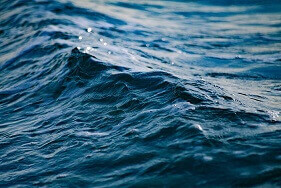Pumping Seawater
Typical Viscosity: 1
SG: 1.02
Seawater, or brine, is an aggressive fluid with a number of challenges. Pump selection needs to take into account the changing nature of the fluid being transferred, and any other environmental factors which may challenge handling processes, such as the presence of marine life.
One of the most difficult to manage aspects of seawater is how temperature effects the concentration of salts or brine, and the concentration of possible contaminants such as sulphides.
Bronze is an excellent choice of material for seawater pumping applications and is used in over 90% of situations. It is readily available, and possesses qualities that can withstand many years of trouble-free service, giving a favourable price ratio.
View our range of Seawater Pumps
What to consider when selecting a pump for seawater applications
Selecting a pump for pumping seawater involves unique considerations due to the corrosive nature of saltwater and the challenges posed by marine environments. Whether for marine applications, desalination plants, or offshore operations, several factors must be taken into account to ensure optimal performance and durability:
Corrosion Resistance: Sea water is highly corrosive due to its high salt content often expressed as TDS (Total Dissolved Solids). When selecting a pump, it's crucial to choose materials that are resistant to corrosion, such as stainless steel, duplex stainless steel, bronze, or titanium. These materials help prevent degradation of pump components and ensure long-term reliability in marine environments.
Although Titanium is lightweight and resistant in such scenarios, due to the difficulty in casting components due to high wastage and product quality such as inclusions it is rarely used in pump manufacture.
Seal Integrity: Seals play a critical role in preventing sea water from entering the pump housing and causing damage to internal components. Opt for pumps with robust sealing mechanisms, such as mechanical seals with silicon carbide faces to protect against abrasive sand particles or labyrinth seals, to ensure tight seal integrity and minimize the risk of water ingress.
Saltwater Fouling: Sea water often contains impurities and marine organisms that can accumulate on pump surfaces, leading to fouling and reduced efficiency. Consider pumps with anti-fouling coatings or designs that minimize the build-up of marine growth to maintain optimal performance over time.
Operating Depth: For offshore or subsea applications, the operating depth of the pump is an important consideration. Choose pumps rated for the required depth to ensure they can withstand the hydrostatic pressure and environmental conditions encountered at depth. Alternatively, if surface mounted, ensure they can prime the distances required and that intake pipes and strainers are correctly sized.
Temperature and Pressure: Sea water temperatures can vary widely depending on the location and depth of the pump. Select pumps capable of operating within the expected temperature range without compromising performance or risking damage to internal components. Additionally, consider the pressure requirements of the application and choose pumps with sufficient capacity to handle the required flow rates and pressures.
Maintenance and Accessibility: Access to the pump for maintenance and inspection is essential, especially in marine environments where corrosion and fouling can occur more rapidly. Select pumps with easy-to-access components and serviceable parts to facilitate routine maintenance and minimise downtime.
Compliance with Regulations: Ensure that the selected pump complies with relevant industry standards and regulations for marine applications, such as those set by classification societies or regulatory bodies. Compliance helps ensure safety, reliability, and environmental protection in marine operations. If units are located on offshore rigs, ATEX is likely to be a requirement.
By carefully considering corrosion resistance, seal integrity, anti-fouling measures, operating depth, temperature and pressure requirements, maintenance accessibility, and regulatory compliance, operators can select the most suitable pump for pumping sea water, ensuring reliable performance and longevity in challenging marine environments.
To discuss your seawater pumping requirements with a pump process specialist, get in touch.




